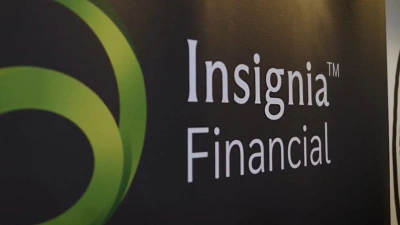Technology brings it all together for advice
The desktop of the financial planner has become a crowded place as portfolio modelling, client management and planning and compliance tools each stake their claim for a place in the adviser’s toolkit.
These tools can be compared with those of a tradesperson as they each serve different purposes and needs, but unlike physical tools of wood and metal, technology is driving more functions into less packages to make the financial planning process easier.
Evidence of this convergence is clear with Credit Suisse Asset Management signing a deal four months ago to use IWL’s VisiPlan software at the front-end, replicating a similar arrangement Sealcorp has between its Asgard master trust and AdviserNet desktop and compliance tools.
Other examples include the growing numbers of fund managers and platforms that are providing data feeds to planning software and research providers, and the ongoing push to develop industry hubs and straight through processing to make transactions more efficient. (Fund hubs and straight through processing are discussed further on pages 23 and 24.)
IWL financial advisory solutions general manager Ross Johnston says convergence in planning technology is occurring primarily at the front-end, as separate systems and software tools are inefficient and often result in advisers having to re-enter client data more than once to be able to manage their financial affairs.
Johnston says this problem is heightened if advisers use more than one investment platform and has been driven by the need for better compliance under the Financial Services Reform Act (FRSA).
This need for better compliance has also picked up the need for research to be more closely tied to the other tools advisers need. Johnston says the convergence of technology has moved the adviser desktop from simple planning software to a business management system.
“Technology has moved to a point where dealer groups at the head office level are able to do audits and check an advisers’ compliance without having to do a site visit with the adviser,” Johnston says.
“This has in turn led to cost reductions at the adviser and dealer level as there is less need for technology support while being more efficient and compliant.”
Credit Suisse Asset Management head of platform Rob Hayward says there is a convergence of technology in financial planning, but it is dependent on what part of the market is under review.
“The market can be split between institutionally-run dealer groups and independents and boutiques with the institutions running one system and platform as they wish to maintain some control over where the funds go and how that happens,” Hayward says.
“Independent and unaligned planners on the other hand often come from that environment and may now opt to pick the components for the systems they use to give planning advice and make investment transactions.”
However, there is some friction, according to Morningstar head of consulting Anthony Serhan, over where the line is drawn when it comes to changing technology systems.
“In our role as providers of research tools and software we have found that at the margins there is always an issue of what to keep and what to outsource and who is best placed to be involved in supplying third party technology,” Serhan says.
He also says there is often a reluctance to go outside a group for new systems because it means passing on control and possibly access to previously internally held systems and processes.
And like the growth of platforms with most dealers and advisers using more than one system for differing features and functions, Serhan says planning technology users will not settle for only one product.
“It is not possible to build any product that serves all people because it is too costly and too feature laden to suit all users, which is a problem some of the platforms still have.
“There will still be single pieces of software that cover all the bases and they will be offered by a range of players, but it is unlikely the large institutions will buy them as they either have their own systems or are still committed to large-scale legacy products.”
While the barriers are coming down, Johnston says there is still some resistance between the front and back-ends with most movement occurring laterally on the desktop.
“There will always be a front-end for the adviser and a back-end for the platform and fund managers, and at present we are seeing the coming together of risk insurance, managed funds, equities, superannuation and other investment tools with client management, financial planning and compliance systems,” Johnston says.
“In the future this should also include mortgage broking, and in some cases has already started to cover commission and fee tracking and margin lending.”
Johnston says the next hurdle is to better connect systems through the whole chain so advisers can transact through a platform, into the manager and receive confirmation about the transaction through one system.
“Straight through processing should become the engine behind the ‘front-to-back-to-front’ convergence, but this has not happened yet.”
According to Hayward, this is also the next area of development, with platforms and adviser software set to provide this functionality due to what he calls “the failure of hubs to get up in the industry”.
“Advisers can already use a single piece of software to bypass the individual portals of fund managers and soon will be able to bypass the portals of platforms as well, raising the issue of disintermediating the underlying platform provider from the adviser,” Hayward says.
At the same time, Hayward says advisers are demanding more from platforms, such as portfolio modelling tools, and it is possible advisers may be forced into using only those front-end systems that have a relationship with the preferred platform.
Johnston says convergence of systems that offer a wider range of services will make it difficult for new entrants into the market if they can only offer a single product with limited functions.
“There will be one-stop systems in the future, but they will be offered in modules akin to what Microsoft has done with Office and will be sold dependent on the areas of expertise of those using the product,” Johnston says.
Yet Serhan says technology is not an absolute certainty and that market moves quickly and advisers want simplicity.
“Advisers want software to do simple things such as single entry of data and for providers to react to what they need. The focus has to be on ease of use, clear features and intuitive use and design.”
Recommended for you
Net cash flow on AMP’s platforms saw a substantial jump in the last quarter to $740 million, while its new digital advice offering boosted flows to superannuation and investment.
Insignia Financial has provided an update on the status of its private equity bidders as an initial six-week due diligence period comes to an end.
A judge has detailed how individuals lent as much as $1.1 million each to former financial adviser Anthony Del Vecchio, only learning when they contacted his employer that nothing had ever been invested.
Having rejected the possibility of an IPO, Mason Stevens’ CEO details why the wealth platform went down the PE route and how it intends to accelerate its growth ambitions in financial advice.















